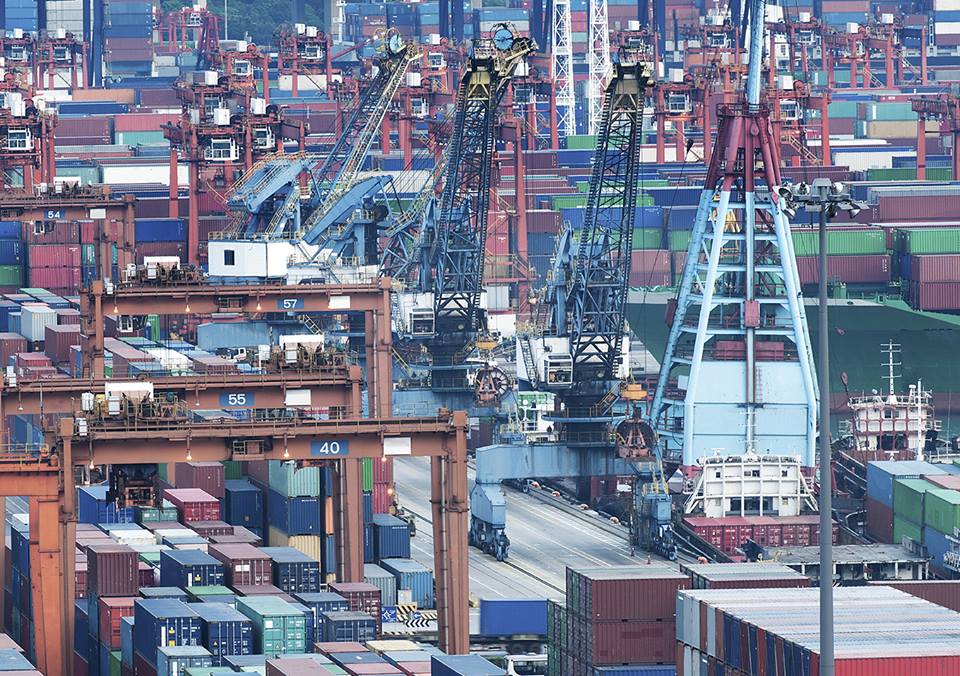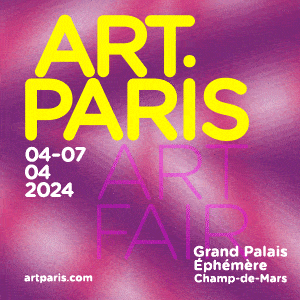Whitehot Magazine
April 2024
"The Best Art In The World"
"The Best Art In The World"
April 2024
Post Autonomy: Simina Neagu Interviews David Goldenberg

By SIMINA NEAGU, NOV. 2014
David Goldenberg's complex practice, focusing on the concept of Post-Autonomy and often employing participatory practices, poses ambitious questions on the future of art, thinking and language. And by investigating the geopolitics of biennials, David Goldenberg manages to shed light on a problematic, yet engaging set of inquiries. We set out to discuss the finer details of his ongoing work, whose structure is provided by the methodology of artistic research and a constant interest in collaboration.
Simina Neagu: Why a new language? What is it about the framework of art that prevents new development?
David Goldenberg: To answer your first point, images of the container, the route for a Mobile Biennial and ideas for selecting information on Biennials that made up the installation for Venice were elements taken from the exhibition I staged in Milan in 2012, “The Scenarios of Post Autonomy”.
We don’t have language, nor thinking. Any discussion of a new language and discovering a language refers explicitly, on the artistic level, to the narrative described by the scheme of Post Autonomy, which indicates an end point in the trajectory of art as a signal for its collapse and reimagining, and this describes precisely the collapse of language and thinking and its rediscovery. This can appear reactionary and anti-artistic, but this is wrong, since PA registers neo liberalism’s and cultural capitalism’s impact on art. Given that art and language are described as an absence, this can appear uncomfortable; however, an indication of a new language is shown at the point that the collapse of art triggers a new mental image of art, language and thinking. These complexities were visualised in the installation in Venice, the title, “the transformation of art”, showing a route back into language and thinking. These observations need to be seen alongside the influence of Thomas Krens, director of Guggenheim, and his statement in the ‘90s that art doesn’t need further developments in the push to make art more accessible and global, which is outrageous and a clear indication of conservative thinking, leading to the proliferation of non critical practices and unwillingness of artists to openly engage with serious problems behind biennials and the globalisation of art. All these threads have been taken up by recent authors, who have traced the complete stripping away of existing terms and theories inherited from Post war art to define art, there are no readymade terms and criteria to define art, so whatever is happening now is highly significant and gives credibility to Post Autonomy.

Neagu: The format of the Biennial still positions itself between Nationalism & Globalisation. What is the main issue behind the format and how does PA want to change it?
Goldenberg: There is no consensus concerning the definition of what a Biennial is, but this is the main argument between Nationalism and Globalisation for breaking down the global expansionist role of Biennials. However the main problem concerns issues I have just mentioned, preventing developing art and thinking. The term “Biennial”, along with “contemporary art”, both equally obsolete, comprise the existing spatial temporal coordinates defining art. As a term, Biennial locks thinking into a restricted format, but the frustrating problem is that no other format exists, so we are forced to visualise our own. It also locks art into the function of expanding the Western art market, and this is where we do find a consensus. But if we imagine beyond the term and function as sites for art in a global context, the terms to reformulate the ontology of art intersect. Therefore, our task was how to stage a project examining these issues without replicating these mechanisms and break with these restricted forms into thinking.
Neagu: How will a Mobile Biennial propose to resolve the common criticism of a Biennial that its Global agenda overlooks a local context?
Goldenberg: We used the image of a Mobile Biennial to mentally unfix the Biennial exhibition, which allowed us to project our thinking into the concrete practicalities of touring a show to different locations and the political ideological consequences of doing this, as well as designing and organising our own biennial.
Neagu: What is the similarity between a Global shipping container industry and Global exhibitions?
Goldenberg: The Global container industry provided a very simple familiar image that allowed us to link together the container with a Biennial pavilion, gallery units, minimalist sculptures as signs of global western art, the Global circulation of art and commodities. Two images structured our thinking: the image of a container port to summarise the existing limits, non development, Non thinking, stasis, the physical limit of what is possible, set against the Container Park to visualise going beyond existing forms leading into thinking and reconfiguring art. The installation in Venice comprised two containers in our imaginary container park.
Neagu: Define Participatory Cultures?
Goldenberg: Participating cultures is a new term to embody the entry into thinking that changed Post Autonomy from its earlier limited definition into an expanded version. Existing methodologies and thinking are unable to break open the loop that traps us within the mechanisms of colonial and global expansion and non-thinking. So we need something to assist us. Participating cultures is part of this thinking revolving around how to break open this trap and locate a trigger to start the process leading into reimagining art again. This occurs through linking up with Globally distributed cultures who are in the same stage of rethinking art as ourselves, and work towards developing a new art through exchanging ideas. This seems to take art to a higher level.

Neagu: Did the show in Venice raise new Questions?
Goldenberg: Yes and it revolves around recognising the 2nd effect the ideas generated, and occurred when we recontextualised the installation and issues raised in Venice to Baku, in the form of a kit for a mobile Biennial, using the design for an imaginary container park, including a model of the Venice installation. What is of interest here is how we shift from the centre of cultural power in Venice out to a country and culture who represented the first example of a participating culture, in order to engage with the actual reality of establishing a participating culture. Bypassing the idea of a participating culture to the reality and context of a participating culture and reinventing the Biennial uncovers and puts under threat principles of western modernism, its autonomy and cultural power, and brings us face to face with the realisation that what we take for granted needs to be fought for and that it is unlikely that the principles of western modernism will be retained. In other words, entering a context where we begin to actively reimagine art again completely unsettles our received understanding, generating a shock, and asks us very forcibly what we still want from art. It is here where new questions arise, moving us into the core of establishing participating cultures. What elements do we select and retain and what qualities and what criteria are used to select suitable cultures to be part of the network of Participating cultures?
Neagu: Why is collaboration an important component? And say something about the PA group.
Goldenberg: It isn’t so much collaboration, as participation, which is a methodology with its sets of problems that I have explored since the 1990’s, first as a cybernetic model, then a Systems theoretical model, and its fundamental replacement of Modernism’s terminology around the artist and art work, as a basis for breaking down hierarchies and cultural power. Participating cultures sought to reframe participatory practices after its recent appropriation by institutions. Members of the Post Autonomy group occupied points in both actual geographical space and in our imaginary map to take the mobile Biennial, a string of geo political coordinates that allowed us to test out and exchange our understanding and vocabulary for articulating art and its possible development, in other words, they were a physical embodiment to work towards materialising participating cultures.
I want to thank Ioana Pioaru and Bahram Khalilov for their advice and collaboration on many stages of the project.

Simina Neagu
Simina Neagu (b. 1988, Bucharest) works as a curator, cultural manager or journalist. She obtained an MA in Aesthetics & Art Theory at Centre for Research in Modern European Philosophy, Kingston University London and collaborated with various institutions such as Pavilion Unicredit, Bucharest Biennale, Centre for Visual Introspection (Bucharest), Knoll Galerie (Vienna and Budapest), South London Art Map or Artist Pension Trust Institute (New York). In 2011 she co-founded the curatorial collective AAA+ and since 2013, she collaborates with artist Silvia Vasilescu for [perplex projects]. She’s a regular contributor to South London Art Map Magazine and has written for various international organizations such as Gothenburg Museum of Art, The Project Biennial of Contemporary Art, D-0 ARK Underground or Centre for Contemporary Art Ujazdowski Castle. Lives and works in London.
view all articles from this author







